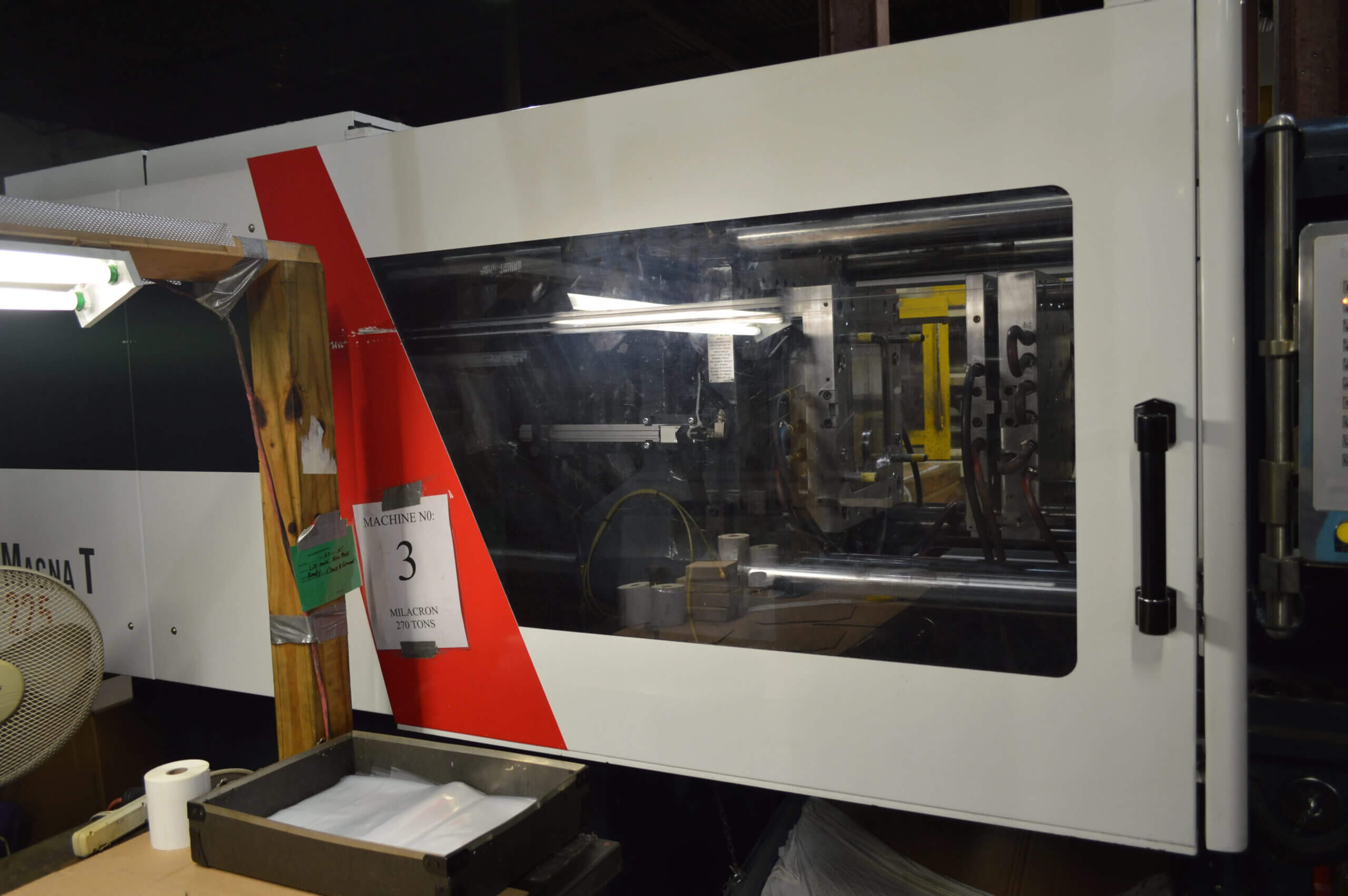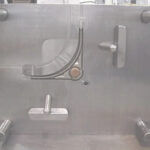Injection molds are intricately designed to produce perfectly shaped plastic products. There are several systems within an injection mold that that serve critical functions during the tooling process. There’s a distribution, cooling, and ejection system that turn molten plastic into a hardened plastic product.
The Distribution System
Initially, the injection unit is filled with a shot of molten plastic. Prior to injection, the two halves of the mold are securely closed and held together by the clamping unit. The injection mold only has air inside of it.
The mold has a distribution system through which the molten plastic is transferred from the injection unit into the injection mold. The time needed for this system can be estimated by the shot volume, injection pressure, and injection power.
Using pressure, the injection unit inserts molten plastic through the sprue bushing, down the sprue, through the runners, past the gate, and into the cavity image. As the molten plastic fills the cavity image, the air is forced out through narrow vents in the mold.
If the trapped air does not escape, it will be pressed into the corners of the cavity image and cause defects in the plastic product. Sometimes it can even ignite and burn the plastic. The molten plastic is too viscous to escape through the air vents.
Due to its small size, the gate is the first to solidify so that it can stop the flow of molten plastic into the cavity image.
The Cooling System
The mold has a cooling system to speed up the hardening process of the plastic. The time needed for this system can be estimated by the thermodynamic properties of the plastic as well as its maximum wall thickness.
There are tunnels drilled just below the inside of the cavity image. Hoses are placed inside these tunnels and are filled with coolant, typically water, from an external pump. The coolant absorbs heat from the molten plastic as it moves through the hoses. This keeps the mold at the perfect temperature for the most efficient hardening process.
As the molten plastic cools, it hardens into its final shape. At the same time, the molten plastic shrinks and sticks tightly to the ejector mold (B Plate). This cooling process takes less than a minute to complete.
If the molten plastic shrinks too much, it may warp and crack or may not eject properly. Shrinkage needs to be taken into account when designing an injection mold and depends on the amount of plastic that is used.
The Ejection System
Lastly, the injection mold also has an ejection system for removing the finished plastic product. The time needed for this system can be estimated by how long it takes the injection mold to open, remove the plastic product, and close.
When the molten plastic is finished solidifying, the mold opens slowly to allow air in to break the vacuum seal. Afterwards, the ejector mold (B Plate) quickly slides away from the injection mold (A Plate) and uses ejector pins to push the finished plastic product off of the mold. You can always find marks on the plastic product left by the injection mold. The injection mold then closes and the whole process repeats.
If this doesn’t answer all of your questions about injection molds, check out our
Complete Guide to Injection Molds for Plastic Injection Molding to learn even more.
Ready to discuss your project? Contact Murray Plastics today!
REQUEST A CONSULTATION



